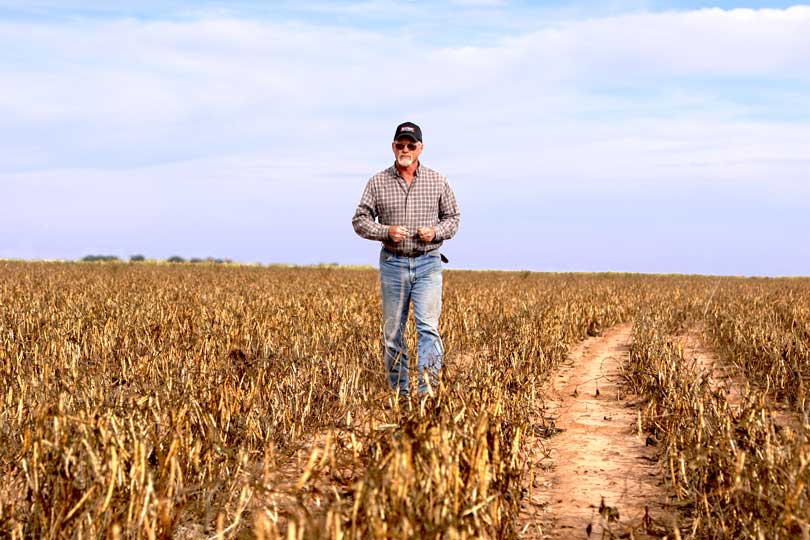By Jennifer Dorsett
Field Editor
Eaten on New Year’s Day, black-eyed peas are fabled to bring you good luck all year long. And Texas Panhandle farmers consider themselves lucky to grow them, as well.
“We use black-eyed peas as a catch crop, especially if we lose cotton early,” Kevin Humphreys, a cotton and black-eyed pea grower from Lamb County, said. “Primarily, cotton is my crop, but I’ve been growing black-eyed peas from time to time for probably 30 years.”
Humphreys said black-eyed peas are a viable option when cotton crops fail.
This often happens on the dry, windy plains.
Farmers plant cotton. Then something goes wrong. Mother Nature doesn’t send enough rain, or a hail storm beats down tender new plants.
But black-eyed peas also flourish in the semi-arid climate of Humphreys’ home county. Plants mature quickly, giving farmers another opportunity to make a profit.
“This year, we got the other circle of cotton established, but this patch failed. So we came back with the black-eyed peas,” he said. “It’s real fast. No decisions to be made about what to plant next. This is just what we do.”
Humphreys said black-eyed peas have fewer inputs and issues with pests compared to other late-planting options like grain sorghum.
Irrigation can be the most challenging aspect of growing black-eyed peas.
“It’s a hard balancing act when we have to split water,” Humphreys said. “It looked like we were going to be able to make more money putting the water into peas instead of cotton, because the cotton market started falling.”
He believes this year’s decision will pay off.
Panhandle farmers wouldn’t be as successful at growing the peas without a place to process and sell them nearby.
“We used to go to grain sorghum as a second crop,” Humphreys said. “But we had our [black-eyed pea] processor move into town and give us a better option.”
Texas Best Bean & Seed came to Olton about 20 years ago. The company converted an old Frito-Lay corn processing plant into a facility capable of processing black-eyed peas, sunflower seeds and other crops. The plant remains open year-round since it can take on different crops.
Packagers and canners are the main purchasers of black-eyed peas. Packagers sell bags of dried peas for home cooking, and canners cook and distribute peas as a ready-to-eat product.
Peas that don’t make the grade for human consumption go to livestock feed. The high protein content is good for wildlife.
Bobby Redwine, general manager at Texas Best Bean & Seed, said he typically works with around 20 growers. It all depends on commodity prices and how well cotton is holding up that year.
“You have to know what the demand is and make your acreage meet the demand,” Redwine said. “You limit production, so that you can market efficiently, and the grower gets compensated.”
It all works in tandem. Farmers make the best out of a bad situation, and Redwine proudly ships quality, Texas-grown black-eyed peas all over the nation.
“It’s a team effort,” he said. “An elevator’s nothing without a farmer. A farmer needs an elevator. There’s pride in that, knowing you get to be part of the process.”

